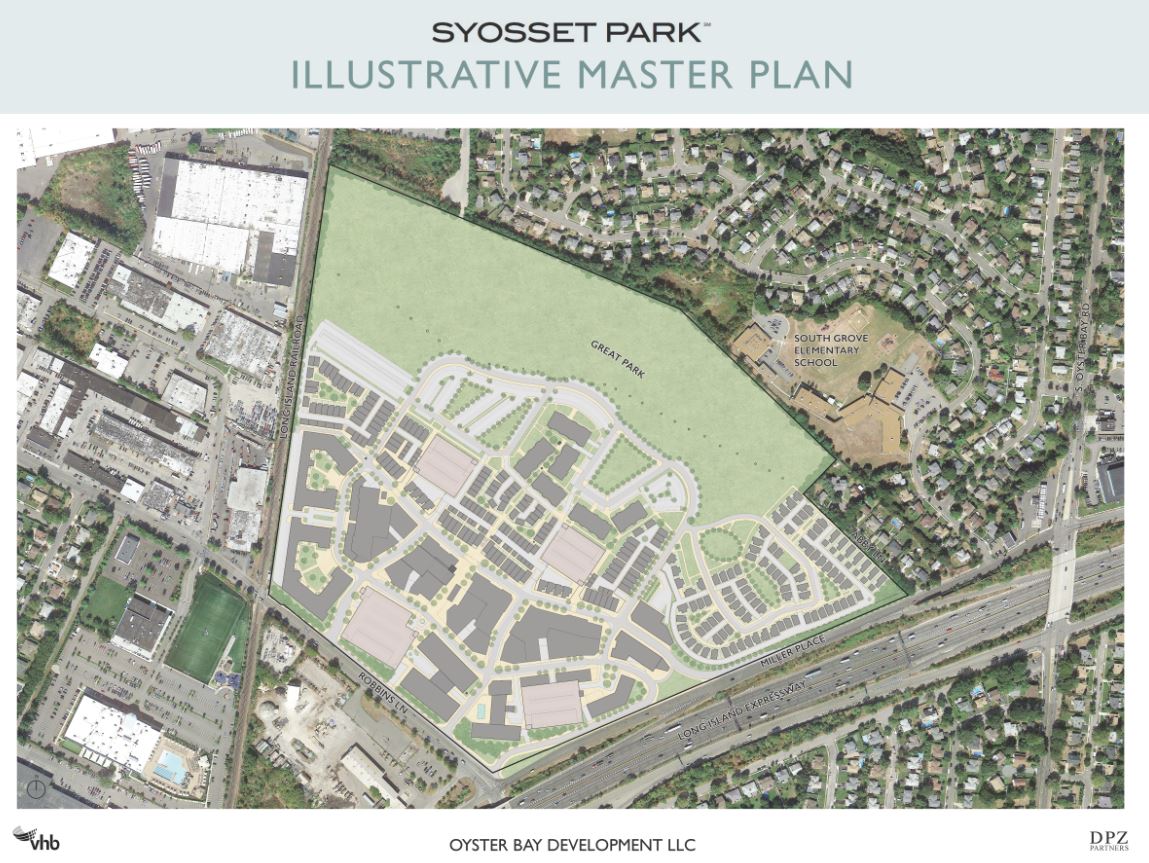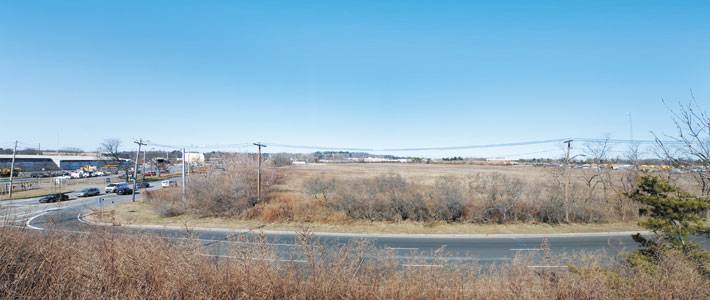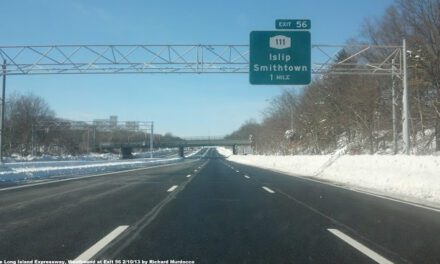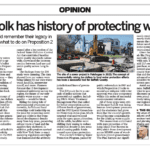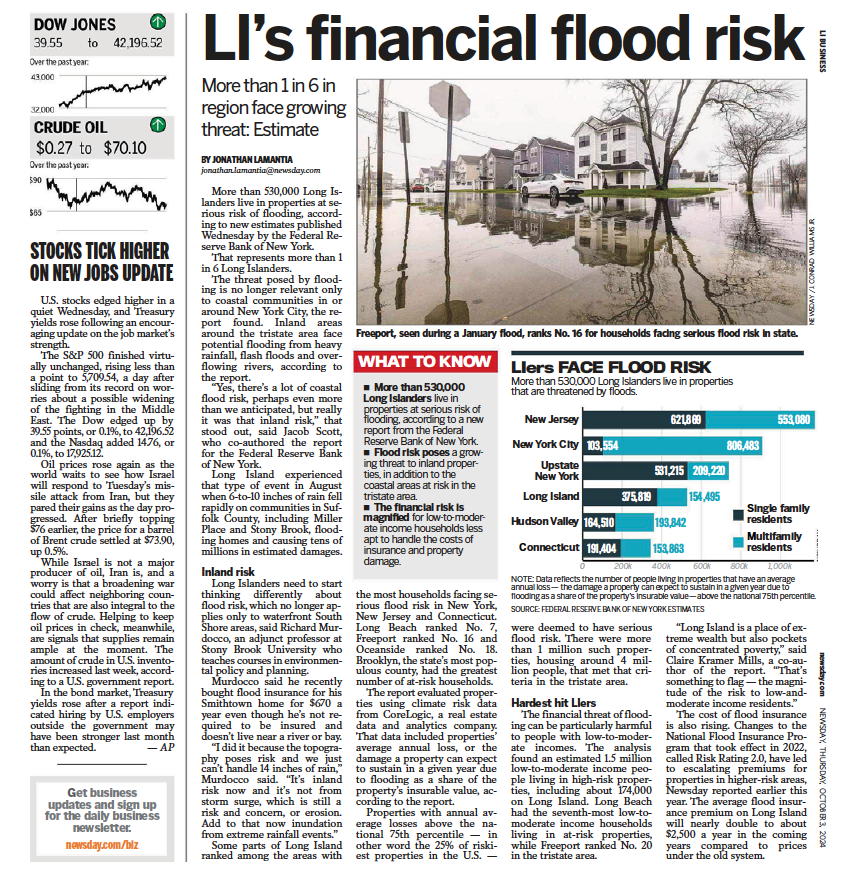The following was written for the Long Island Press. The original piece can be read here.
After decades lost in strife, the barren Cerro Wire property in Syosset may finally get a transformation the community can embrace. Now there’s a plan to build a “walkable village” with more than 600 residential units—no rentals—and 200,000-square feet of office space. Is this proposal sound planning, not only for the town, but for Long Island as a whole?
To an outsider, the large field along the Long Island Expressway off Exit 43A would be questionable in its emptiness. After all, Long Island’s open space this close to Queens was mostly built up long ago. Yet, by Robbins Lane in Syosset, sits 39 idle acres, driving developers crazy.
To residents, the land’s vacancy is a point of pride, the culmination of many years spent in opposition to the Michigan-based Taubman Company’s plan for an upscale regional shopping mall there. It’s a narrative community activists know by heart.
Thanks to a land deal that served as the final blow to the project, 39 acres suddenly became 93, with the cooperation of the Town of Oyster Bay, which had long been one of Taubman’s fiercest foes. The newly announced Oyster Bay Development LLC, a group effort by Manhasset-based Castagna Realty, the Garden City-based Albanese Organization and the Indiana-based developer Simon Property Group, is thinking big. Their ambitious proposal was recently unveiled at two public meetings at the Crest Hollow Country Club. Named Syosset Park, here’s how the current proposal is shaping up:
• 625 owned-residential units
• Two business-style and boutique hotels with 325 total rooms
• 65,000 square feet of casual and white tablecloth dining choices
• 35,000 square feet of entertainment/theater offerings
• 355,000 square feet of retail shops
• 3,000 public parking spaces
• 30-acre community park
• 200,000 square feet of office space
The breakdown of the residential units includes flats, condos, townhouses, “traditional cottages,” as well as seven full-sized single-family homes. This mix will be dispersed among seven neighborhoods.
Overall, the project seems to have garnered a generally positive response from residents at the recent public meetings. While civic leaders may have breathed a collective sigh of relief that the Taubman mall is finally dead and buried, their support of the new project should not be the end of the discussion. Important questions still must be asked.
Syosset Park presents a rare opportunity to build a full-scale mixed-use project in Nassau County. Typically, these developments are proposed for Suffolk, where environmental concerns often accompany the developer’s pitch for a high-density zoning allowance due to the lack of wastewater infrastructure to accommodate the additional units. Here, the discussion is mostly limited to concerns about rainwater runoff and traffic impacts. Should the site’s legacy as a brownfield from the Cerro Wire days pose a larger issue, especially with a residential component in the mix? As per urban-planning standards, a redeemed brownfield is typically limited to commercial or industrial uses, so this question is worth posing.
For the capped landfill on the site, the project envisions a large park. This re-purposing is a good solution because the ever-shifting soils as the trash decomposes underneath wouldn’t allow much else. A park is never a bad idea, and a roughly 30-acre addition of both passive and active recreational open space would be welcome in an area that has been essentially built out since the 1960s. The developer should take it a step further, however, and explore the installation of permeable surfaces for parking lots and sidewalks, and other “green” building methods. Making some of the commercial buildings LEED-certified and energy-efficient is a great opportunity in Nassau County, where the old building stock isn’t exactly on the cutting-edge.
Simon is pitching a phased-growth approach, which is also sound. The developer should take that a step further, too. At the completion of each of the five- to six-year periods, Simon and the Town of Oyster Bay should conduct a market study to reassess not only the community’s needs, but those of the region as well. Having a dynamic project like this can reduce the impact of vacancies, both commercial and residential, on the region. And if the analysis proves that another phase is not viable, the developer should act accordingly.
Stating that the residential units will be priced at the prevailing market rate should ease the approval process and ward off NIMBY feelings. But the project should do more to address the elephant in the room: affordability. For so much empty talk about easing our supposed brain drain and retaining the Island’s young millennials, it is almost refreshing that Syosset Park’s promoters didn’t echo the same unproven arguments. Yet, is it wise to construct market-rate housing in an increasingly aging community? Buzzwords aside, it would be smart to offer a large portion of the new units at prices that the next generation of Long Islanders can afford.
Syosset Park takes an interesting approach to letting traffic demand drive the use of proposed commercial and office space. According to the developers, usage that generated rush-hour traffic was minimized, and off-peak hours’ use was maximized in order to reduce traffic flow. This strategy looks good on paper, but in reality the traffic impacts may vary widely. These concerns should be taken very seriously, especially considering that the LIE’s interchange with the Seaford Oyster Bay Expressway is already a bottleneck heading westbound. The site has good access to the LIE, but after the first few development phases are completed, Oyster Bay Development LLC should work with the MTA to construct a new LIRR station that will serve not only residents of Syosset Park, but the greater community as well.
The proposal on its own is valid. But what about its interaction with the other large-scale residential projects being developed across the Nassau–Suffolk region? Examples include the newly approved Country Pointe at Plainview, with its 650 age-restricted units; Wolkoff’s Heartland Town Square, with 9,130 proposed residential units; and the Ronkonkoma Hub, which may have about 1,350 to 1,450 residential units. The commercial component in Syosset Park seems reasonable with the inclusion of hotels, but how will that affect the proposed redevelopment of Huntington Station, which will have its own hotel, and the rapid growth at the Village of Farmingdale? Any future development at Republic Airport should be factored in as well.
The need for more regional coordination ensures that we aren’t just blindly throwing so-called growth at our economic woes. By taking an interconnected approach, development efforts in Farmingdale and Huntington Station can complement those in Syosset, ensuring the success of each project. Without an alignment of development properties, we’re setting ourselves up for an expensive series of failures.
Compared to Taubman’s original mall idea, Syosset Park is a much better option. But the community must judge the project on its own merits, not on the site’s troubled history. Significant regional questions remain, and the project can be further improved. The developers seem to be interested in soliciting community input. Now it’s up to residents to communicate what they want for the area, not just what they oppose. It’s taken us this long to get here.
Let’s make the old Cerro Wire site a sterling example of how Long Island can get something done right.

